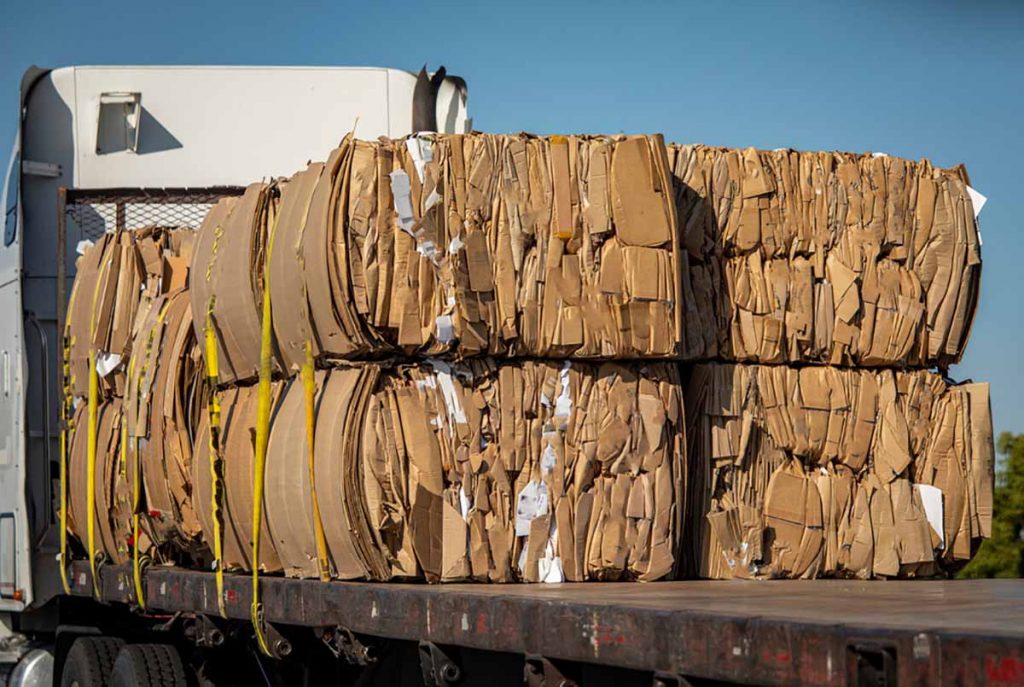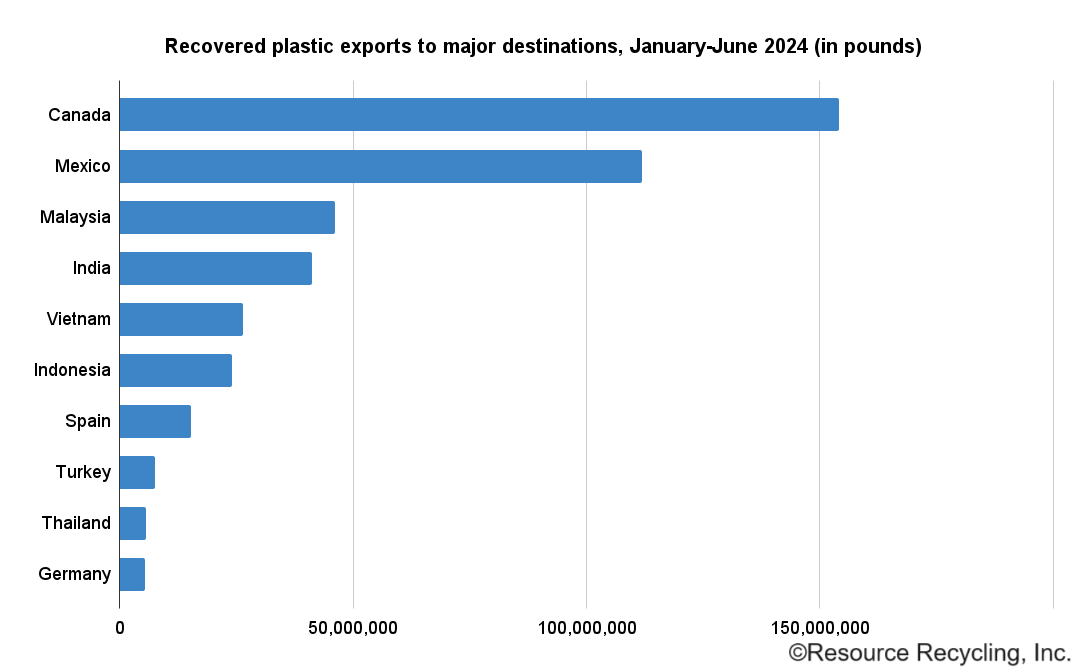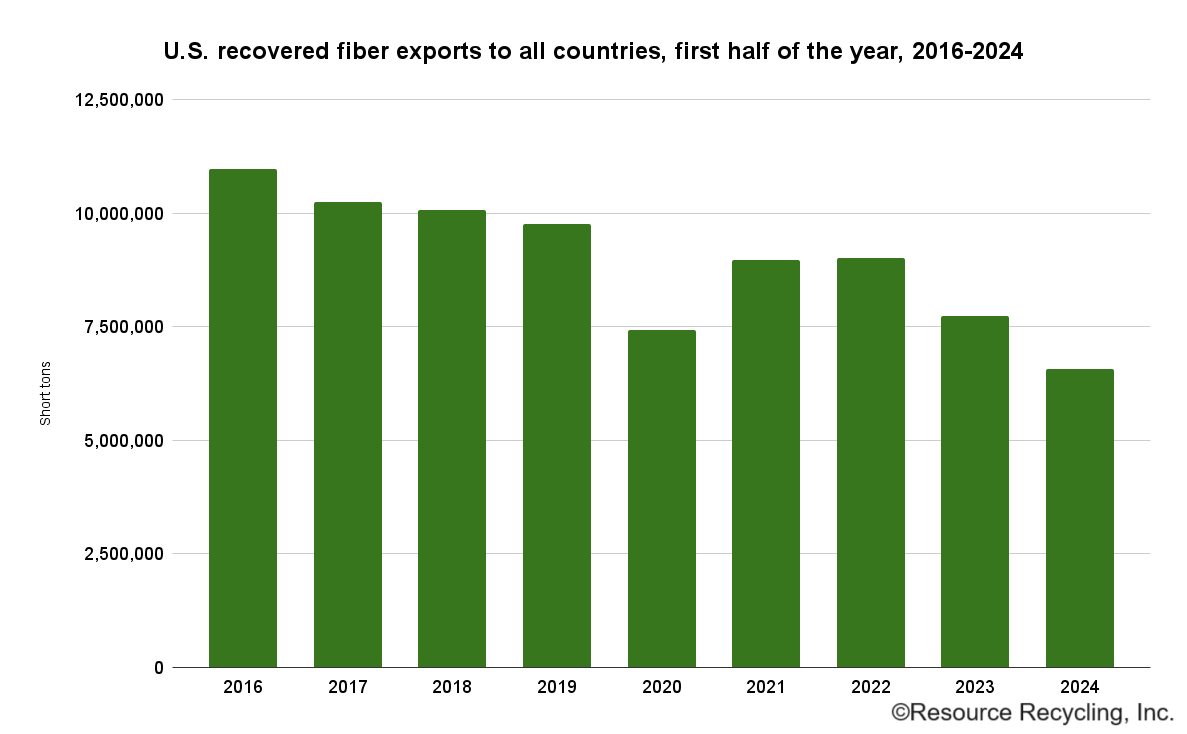
Fiber exports continued their multiyear downward trajectory overall, though Canada and Malaysia marked double-digit increases on the year. | F-Armstrong-Photography/Shutterstock
Recovered paper exports angled downwards during the first half of 2024, as major overseas buyers decreased their purchases by as much as 30% year over year. On the plastics side, more than half the material that left the U.S. stayed in North America.
The Census Bureau recently released data for June exports, allowing for a half-year comparison with prior years.
Fiber exports down 15% year over year
Significantly less recovered fiber was exported out of the U.S. during the first half of 2024, continuing a multiyear trend of falling exports.
Exporters shipped 6.57 million short tons of recovered fiber out of the country from January to June of this year, down 15% from 7.73 million short tons during the same period in 2023.
The drop this year was driven by declines in exports to major end markets. Shipments to Thailand were down by 26%, or 350,000 short tons; shipments to Vietnam were down 30%, or 280,000 short tons; and shipments to India were down 18%, or 260,000 short tons.
There were increases to some markets – Canada brought in 150,000 more short tons, a 39% increase, and shipments to Malaysia were up by 190,000 short tons, a 24% increase – but they weren’t enough to offset the major declines.
The largest destinations for U.S. recovered fiber were India (1.17 million short tons), Thailand (1.02 million short tons), Malaysia (994,000 short tons), Mexico (991,600 short tons), Vietnam (592,000 short tons) and Canada (525,000 short tons).
OCC made up 68% of all fiber exports during the first half of the year, mixed paper contributed another 15%, and newsprint was just 3%. The remainder was high-grade deinked paper and various grades of chemical and mechanical pulp.
 Plastics largely stay in North America
Plastics largely stay in North America
Recovered plastic exports out of the U.S. totaled 481 million pounds in the first half of the year, up about 1% from 475 million pounds during the same period in 2023.
The relatively unchanged volume comes after years of declining scrap plastic exports. The decline has been driven by overseas market shifts and overall increasing regulation of the global scrap plastic trade. The 2021 Basel Convention amendment that brought some of the most frequently exported scrap plastics into the convention’s regulatory framework was one such significant shift.
The largest export markets were the U.S.’s northern and southern neighbors: Canada imported 154 million pounds and Mexico brought in 112 million pounds. That means over half the recycled plastic that left the U.S. stayed in North America.
The third-largest downstream destination for scrap plastic was Malaysia, importing 46 million pounds during the first half of the year. According to the trade data, 41% of the exports to Malaysia were categorized as PE, 28% were PET, and 28% were categorized as “other” plastics, a category that generally includes mixed plastic.
Under most interpretations of the Basel Convention, exports of mixed plastic from the U.S. to Malaysia – and most other countries – could be illegal, because the Basel amendment categorizes mixed plastic as a regulated material. Exported loads consisting of a single polymer type were not regulated in the same way, and face less scrutiny. A non-Basel-party country like the U.S. is prohibited from trading regulated material with a party country, like Malaysia, in the absence of a separate agreement between the two nations. The countries do not have a separate agreement covering shipment of scrap plastic from the U.S.
However, the “other” plastics category could theoretically also include clean loads of polypropylene or ABS, which would be allowed under Basel, so it’s not clear how much of that 28% is in compliance with or in violation of Basel rules.
Other major downstream outlets during the first half of 2024 included India (41 million pounds), Vietnam (26 million pounds) and Indonesia (24 million pounds).
 A version of this story appeared in Plastics Recycling Update on August 7.
A version of this story appeared in Plastics Recycling Update on August 7.


 Plastics largely stay in North America
Plastics largely stay in North America